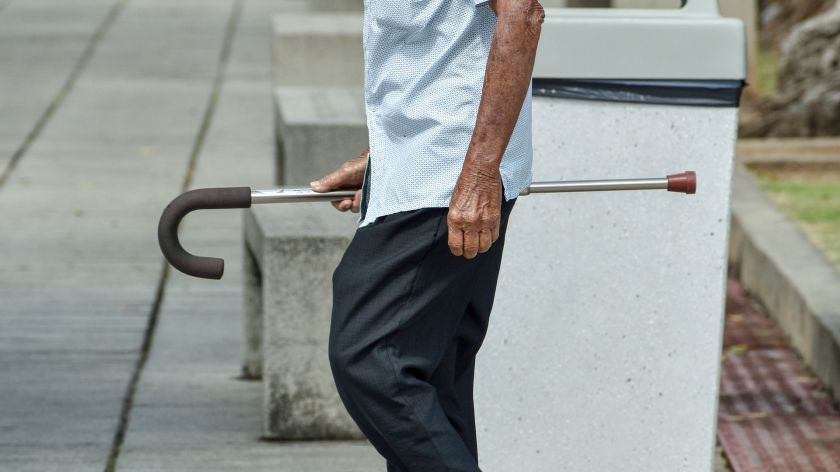Artificial intelligence maps Parkinson’s disease
-
 Foto: Esteban Rodriguez, Pixabay
Foto: Esteban Rodriguez, Pixabay
Over the last few years, hundreds of patients with Parkinson’s disease wore a smartwatch which registered their movements. The goal is to more accurately measure how the diseases progresses, Nijmegen researcher Luc Evers explains. It yielded so much data that a new AI lab is being set up to analyse the data.
A neurologist examining a patient with Parkinson’s disease will always only get a limited impression of their symptoms. A doctor’s appointment is a snapshot, which can also give a distorted picture: hospital visits are often stressful, and symptoms such as trembling are stress-sensitive. To better map how the disease develops in everyday life, 520 patients wore a smartwatch over the last few years. Through sensors, the smartwatch recorded, among other things, their movements and heart rate.
The research yielded a gigantic pile of information, PhD students Luc Evers at the Radboudumc explains. ‘Globally, this is the first time researchers of Parkinson’s disease were able to collect this much data from everyday life.’ Ultimately, the data should lead to new gauges with which neurologists can measure the disease’s progression, but first, the researchers are going to unravel the tangled data with the use of artificial intelligence.
16 million
A new lab in the Radboudumc should make that data analysis possible. It is one of the four AI labs for which the academic hospital received a grant of 16 million from the Dutch Research Council (NWO) and businesses earlier this month. The other labs will focus on lung scans, narrowed coronary arteries, and prostate cancer. It is up to Evers to properly lead the analysis of the Parkinson’s disease research.
‘With the watches we think we can accurately measure what everyday movement looks like’
Why do you analyse the data with the help of artificial intelligence?
‘The smartwatches have yielded a huge amount of raw sensory data on the patients’ movements. Many of these movements will not be linked directly to their symptoms, but to their hobbies or work. At the same time, that data also contains information about Parkinson’s disease. We make use of artificial intelligence to filter out useful data, which means recognising the symptoms in that huge pile of data. We do that, for example, by specifically looking at the walking pattern. Reduced arm swing while walking is a well-known symptom of the disease, and with the watches we think we can measure exactly what that movement looks like in everyday life.’
What does this research mean for patients?
‘In the future, we want to use the watches to research the effect of new therapies. Parkinson’s disease is a progressive illness: the symptoms worsen over time. Lots of clinical studies research how you can slow down the disease, but it is difficult to prove the effects of therapy based on short hospital visits. With these digital data we hope that we can more quickly determine whether a new medicine works or not.’
‘Many patients very much want their experiences to be used for good’
‘Watches could also make a difference to the treatment of individual patients in the future. It is often difficult to find a good medication schedule because symptoms can vary greatly throughout the day. If a watch can measure those differences, it will be easier for the neurologist to find the right treatment together with the patient.’
Those smart watches measure every movement you make throughout the day. Isn’t that quite an invasion of privacy for patients?
‘Patients are actually very enthusiastic about this study. We got a lot of applications, even though we expect quite a lot from people. We ask participants to wear that watch continuously for two years and charge it every day. On average, at the end of that period, they still wear it about 21 hours a day, even though it doesn’t do much for themselves at that time. Many patients very much want their experiences to be used for good.’
‘To protect participants’ privacy, we handle all data very carefully. The data is stored securely, and researchers cannot trace the data back to specific individuals.’
You are currently completing your dissertation on this research. What is it like to be at the head of a new lab already?
‘This is a unique opportunity for me to further expand my research and work with a group of scientists in Nijmegen. There is so much to research in this field, you can’t do that on your own. For years, we have been working closely with Verily, the company that developed the smartwatches. That collaboration is important, because we want our results to eventually end up in a product that patients can actually use.’
Translated by Jan Scholten.



